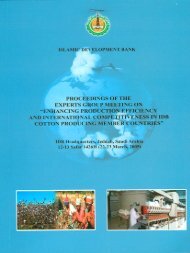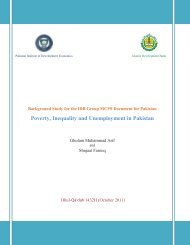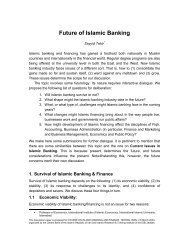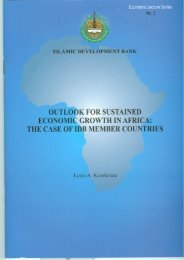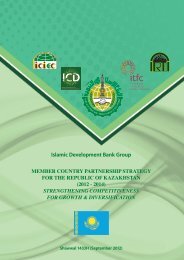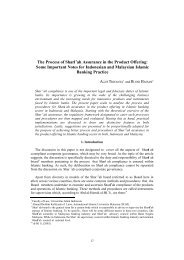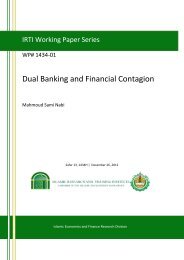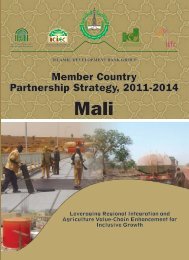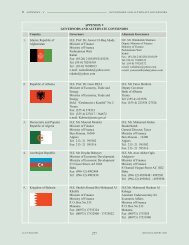Country Economic Work for Malaysia - Islamic Development Bank
Country Economic Work for Malaysia - Islamic Development Bank
Country Economic Work for Malaysia - Islamic Development Bank
Create successful ePaper yourself
Turn your PDF publications into a flip-book with our unique Google optimized e-Paper software.
iii.<br />
Diagnostic Analysis at Sub-Sector Levels<br />
80. In order to understand various dimension of Private Sector <strong>Development</strong>, it is<br />
imperative to undertake the diagnostic analysis at the sub-sector levels, in particular,<br />
finding of opportunities and the challenges and binding constraints facing various key<br />
sub-sectors. The findings of this section help the IDB Group to identify focused programs <strong>for</strong><br />
the niche areas in various sub-sectors. The following sub-sectors are chosen <strong>for</strong> the analysis.<br />
(i)<br />
(ii)<br />
(iii)<br />
(iv)<br />
(v)<br />
Public Private Partnerships (PPPs)<br />
Innovation<br />
SMEs <strong>Development</strong><br />
Private Sector Resource Mobilization<br />
Foreign Direct Investment<br />
(i)<br />
Public Private Partnerships: Key to <strong>Malaysia</strong>n Economy<br />
Overview of PPPs in <strong>Malaysia</strong><br />
81. In <strong>Malaysia</strong> and across the world, demand <strong>for</strong> public services is increasing overtime.<br />
Insufficient public sector capital to meet this demand is leading to an unsustainable gap<br />
between demand and supply. To bridge this gap, the Government is turning to Public Private<br />
Partnership (PPPs) as they allow the public sector to access new sources of finance and get<br />
the benefits that private sector skills and management with reducing cost and generating<br />
greater value from public sector assets. The common link is that both the public and private<br />
sectors need to work closely with a clear and common objective. The PPP presents a number<br />
of recognised advantages <strong>for</strong> the public sector which include the ability to:<br />
<br />
<br />
<br />
<br />
raise additional finance in an environment of budgetary constraints<br />
make the best use of private sector operational efficiencies to reduce cost<br />
increase quality to the public services<br />
speed up infrastructure development<br />
82. Over the years of <strong>Malaysia</strong>’s economic development, national leaders had the<br />
wisdom and the <strong>for</strong>esight to recognize that private initiatives are crucial <strong>for</strong> national<br />
development. Way be<strong>for</strong>e concepts such as PPP, Private Finance Initiative (PFI) or even<br />
privatization existed. <strong>Malaysia</strong>’s development ef<strong>for</strong>ts have always been premised on a probusiness<br />
strategy, where the private sector plays an important role in stimulating economic<br />
growth, with the public sector ensuring overall macroeconomic stability and a conducive<br />
environment <strong>for</strong> both <strong>for</strong>eign and domestic investments.<br />
83. Realizing the fact that infrastructure development is a key component to unlock<br />
potential economic activities and support sustainable economic growth, the Government<br />
of <strong>Malaysia</strong> continues to encourage the participation of the private sector in the<br />
39







